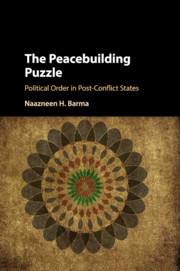Book contents
- The Peacebuilding Puzzle
- The Peacebuilding Puzzle
- Copyright page
- Dedication
- Contents
- Figure and Tables
- Acknowledgments
- Introduction
- 1 Rethinking the Peacebuilding Puzzle
- 2 Political Order in Post-Conflict States
- 3 From Violent Conflict to Elite Settlement
- 4 International Intervention and Elite Incentives
- 5 Neopatrimonial Post-Conflict Political Order
- Conclusion
- Appendix Interviews Conducted
- Bibliography
- Index
- References
Bibliography
Published online by Cambridge University Press: 24 November 2016
- The Peacebuilding Puzzle
- The Peacebuilding Puzzle
- Copyright page
- Dedication
- Contents
- Figure and Tables
- Acknowledgments
- Introduction
- 1 Rethinking the Peacebuilding Puzzle
- 2 Political Order in Post-Conflict States
- 3 From Violent Conflict to Elite Settlement
- 4 International Intervention and Elite Incentives
- 5 Neopatrimonial Post-Conflict Political Order
- Conclusion
- Appendix Interviews Conducted
- Bibliography
- Index
- References
- Type
- Chapter
- Information
- The Peacebuilding PuzzlePolitical Order in Post-Conflict States, pp. 230 - 255Publisher: Cambridge University PressPrint publication year: 2016
- Creative Commons
- This content is Open Access and distributed under the terms of the Creative Commons Attribution licence CC-BY-NC-ND 4.0 https://creativecommons.org/cclicenses/



